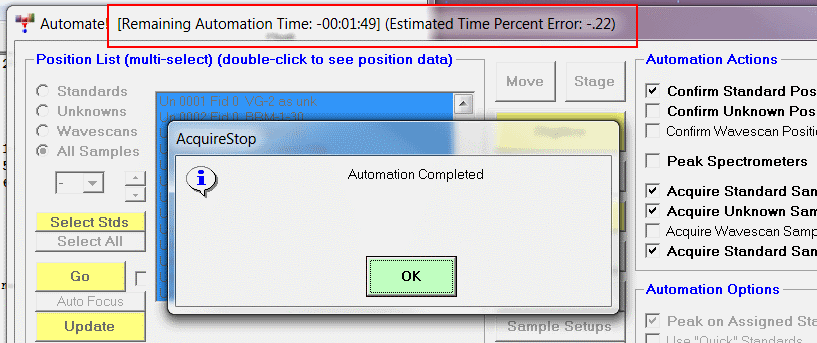Another example of "spurious accuracy"!
As you may know, estimating how long an automated acquisition on the EPMA is going to take, can be useful when planning one's EPMA measurements, especially for long overnight or multiple day runs. In Probe for EPMA the app tries to estimate the time required based on the std, unk and wavescan element setups, count times, acquisition options, beam conditions, crystal flipping, instrument latencies and whatever else might effect the acquisition time. This is not easy to do as one might imagine.
To check on the accuracy of this time estimate, PFE counts down from the estimated time vs. the time of day clock and then displays the remaining acquisition time and at the termination of the automation displays the error of the estimated times as a percent. And occasionally Probe for EPMA is smart (or lucky).
Last night a student ran a large number of melt inclusion glasses analyses overnight which involved two beam conditions per acquisition (10 nA with TDI for major elements and 50 nA for traces), and was estimated to be around 13 hours of acquisition. Here is the displayed time estimate accuracy when the acquisition finished:

Is it skill or luck? We'll never know.